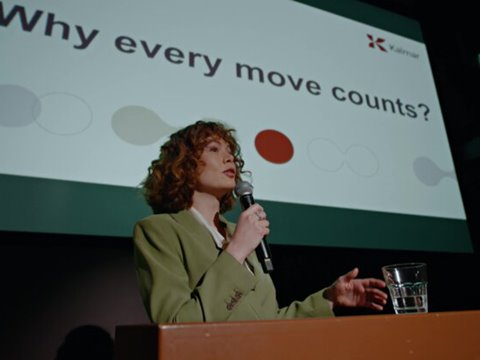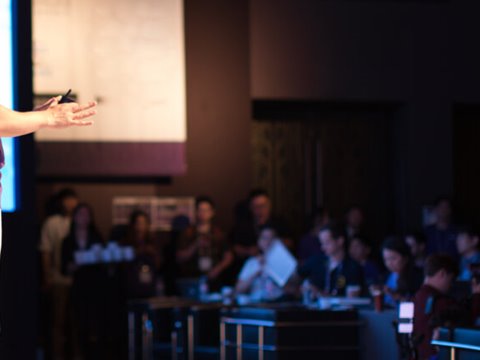
RobotAIsation is the future of container handling
Despite the rapid onset of terminal automation, automated container terminals still account for only a small percentage of the 1,400 container terminals around the world. Meanwhile, the automotive industry is forging ahead at full speed with the development of autonomous cars, which will open up significant possibilities also for our industry. Simultaneously AI has become the number one focus area for the world's ICT giants, so we are definitely at the start of a very interesting journey
Human touch
To illustrate the concept of robotAIsation - my new term for the combination of robotics and AI - I would like to introduce you to my new idol, Winston. Actually, he is a character in the sci-fi thriller Origin by author Dan Brown. When Professor Langdon, the hero of the novel, enters a museum of modern art, he is assigned a personal assistant who not only guides his visit but also engages him in a long conversation about the arts. The same guide helps him as a travel secretary and as a genius-level assistant in solving a murder. In addition to being incredibly fast in his actions, he seems to know everything about everything. This is because Winston is a creation of AI, with instant access to all available digital information. However, he has also been taught to learn about the emotional sides of human behaviour, including humour, empathy, commitment, and so on.
Yes, Winston is an imaginary creation in a work of fiction entertainment. However, as a concept, he is actually a fairly accurate but somewhat naïve description of the projected future of AI. The reality is expected to proceed stepwise towards this direction by solving concrete real-life problems one by one. Autonomously operating equipment and vehicles are only the first step in this development, and in the future we will likely see service robots handling scheduled physical maintenance tasks. At the same time, many support and service tasks will be taken over by AI-based software robots capable of human-style cognition and interaction.
Current work in artificial intelligence is increasingly moving in a direction in which the developer is not responsible for the smartness of the AI, but for enabling self-learning in the system. In the (actually-not-so-distant) future, software robots and AI will identify and fix occurring problems in real time, in addition to handling exceptions or helping humans solve the most challenging situations. Productivity at container terminals will reach a new level, as bottlenecks and problems along with their solutions can be rapidly and automatically fed back into the software development process.
Exception handling is currently one of the most significant limitations – and hence development areas – in automation. Even in a fully automated terminal, there are still numerous situations in which human operators in the control room need to step in and intervene. The key thing to realise is that AI can be built to learn from these situations so in the future they can either be handled automatically or with AI assistance.
New normal
In the robotAIsed future, first- and second-line support services will eventually be handled primarily by computers, and when a customer is calling, he or she might not even notice that their conversation partner is a computer. This still sounds somewhat outlandish today, but once AI capabilities evolve to fully utilise the vast amounts of high-quality data that terminal operations are able to generate, the benefits in service and customer support will be enormous. The software will always have access to the entire existing database of solutions and will be able to access them at speeds far beyond any human capability.
So when will we find Winston in his new job at the call centre? Two, five, ten or twenty years from now? It's impossible to say, but the day will come when robotAIsation will be such a normal part of our life that we will forget that we once even had to invent a new term for it. As our AI solutions evolve beyond algorithm-based applications to capacities that begin to encompass many human capabilities (humour, empathy etc.), we will be moving towards humanised automation in which people and the autonomous world interact smoothly together and produce sustainable solutions. So whatever the future brings, we can be certain that we will be sharing it with our machines and robots, both physical and software-based.
Jari Hämäläinen
Director, Terminal Automation
Kalmar
Related articles
Subscribe and receive updates in your email
Tilaa julkaisujamme













